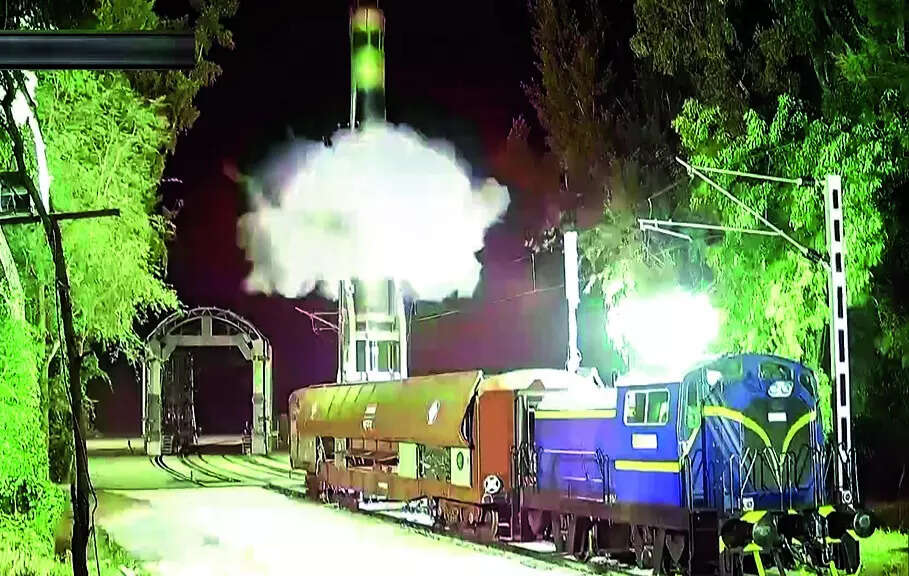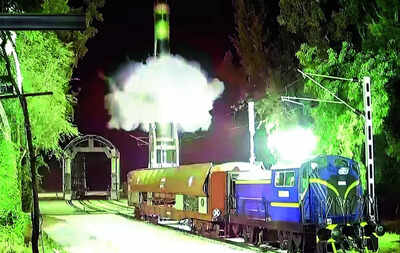NEW DELHI: India successfully tested the new-generation nuclear capable Agni-Prime ballistic missile, which has a strike range up to 2,000km, from a rail-based launcher system for the first time on Wednesday night.With the road-mobile Agni Prime already being inducted into the tri-Service Strategic Forces Command (SFC), the specially designed rail launcher will enhance the operational flexibility, survivability and cross-country mobility of this smallest and lightest ballistic missile among the Agni series. “The rail launcher will allow SFC to launch on the go with a short reaction time, along with reduced visibility to enemy forces. Rail-based launchers, for instance, can escape detection by enemy satellites by hiding in tunnels,” an official told TOI. The Agni-Prime is a canister-launch missile system like the Agni-V, the country’s most formidable missile with a strike range of over 5,000km. In such systems, nuclear warheads are already mated with missiles in hermetically sealed canisters. Consequently, the canisters can be stored for longer periods without adverse weather impact, are easier to handle, and can be swiftly transported through rail or road to launch from wherever required.On Wednesday, DRDO and SFC conducted the test of the solid-propellant fuelled Agni-Prime “under a full operational scenario” from the rail launcher “having the capability to move on the country’s rail network without any preconditions”, the defence ministry said.The trajectory was tra-cked by various ground radar stations and met all mission objectives. “This successful flight test has put India in the group of select nations that have developed canisterised launch systems from on the move rail network,” defence minister Rajnath Singh said.An official said, “The system is self-sustained and equ-ipped with all independent launch capability features, including state-of-the-art communication systems and protection mechanisms.”Agni-Prime will gradually replace Agni-I (700km) and Agni-2 (2,000km) in the arsenal of the SFC, which also has Prithvi-2 (350 km), Agni-3 (3,000 km), Agni-4 (4,000 km) and Agni-5 ballistic missiles. India is also working towards strengthening its naval leg of the ‘nuclear triad’. The commissioning of India’s third SSBN (nuclear-powered submarine armed nuclear ballistic missiles) as INS Aridhaman will take pl-ace early next year after some delay. The first two SSBNs, INS Arihant and INS Arighaat, are fully operational.
Latest Agni-Prime test-fired from rail-based launcher













